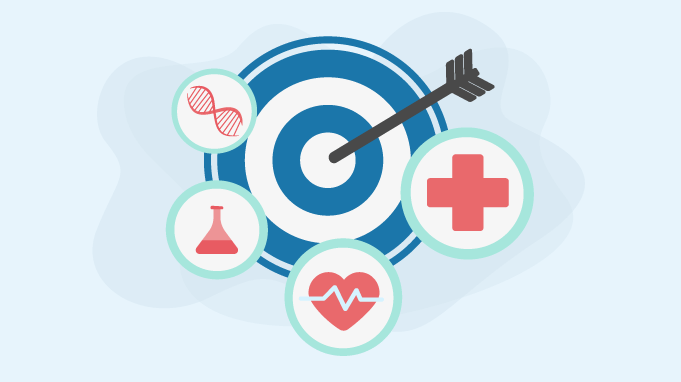Staying healthy is important for everyone, but it can be especially difficult for employees who are always on the go. Juggling work and personal life can be challenging, and it’s easy to let your health fall by the wayside. This is why it’s important to create health goals for employees. When everyone has the same goal in mind, it’s easier to stay on track. In this blog post, we will discuss tips and strategies for creating health goals for employees that will help them stay healthy and productive!
What Is Health?

Health is defined as “a state of complete physical, mental, and social well-being, and not merely the absence of disease or infirmity.” When we think about health goals, we need to consider all aspects of their health – physical, mental, and social. Health is not just the absence of disease or illness, but it is also a state of physical, mental, and social well-being. This means that our goals should encompass more than just diet and exercise.
While those are important factors in overall health, they are not the only ones. We also need to consider sleep, stress levels, work-life balance, and more. By taking a holistic approach to employee health, we can create goals that will truly make a difference in their lives.
What Are Health Goals For Employees?

Health goals for employees are objectives that a company sets to improve the health of its staff. These goals can be either short-term or long-term, and they should be specific, measurable, achievable, relevant, and time-bound (SMART)
Some examples of health goals for employees include:
- quitting smoking
- eating healthier
- exercising more
- reducing stress levels
- getting more sleep
As you can see, these goals are all specific and measurable. They are also relevant to employee health, as they address different areas that can impact overall well-being. Finally, they are time-bound, meaning that there is a deadline for achieving them. This helps to keep employees focused and on track.
Types
When it comes to employees’ health, there are a few different types of goals that you can set.
The first type of goal is an individual goal. This is a health goal that is specific to each employee. For example, an individual goal could be to quit smoking or to lose weight. These goals are important, but they can be difficult for employees to achieve on their own.
The second type of goal is a team goal. This is a health goal that the entire team works towards together. For example, a team goal could be to walk 100 miles in a month or to eat healthier lunches. These goals are more achievable because everyone is working together towards the same goal.
The third type of goal is a company-wide goal. This is a health goal that the entire company works towards together. For example, a company-wide goal could be to reduce health insurance costs or to improve employee productivity. These goals are important because they can have a real impact on the bottom line.
Benefits
Setting employee health goals is a great way to improve the overall health of your company. By taking a holistic approach to employee well-being, you can create goals that will make a real difference in the lives of your staff.
There are many benefits to setting health goals for employees. For one, it can improve the overall health of your staff. This, in turn, can lead to increased productivity and decreased absenteeism. Additionally, it can also reduce healthcare costs for your company. Finally, it shows employees that you care about their well-being and are willing to invest in their health.
Creating Employee Health Goals
- The first step in creating health goals for employees is to define what those goals are. What does your company want to achieve? Do you want to improve employee productivity? Reduce sick days? Encourage healthy lifestyle choices?
- It’s important to be specific when setting health goals. Vague goals like “be healthier” or “lose weight” are not going to be effective. Employees need something to strive for that is measurable and attainable. Once you have defined your company’s goal, you can start brainstorming ways to achieve it.
Here are a few examples of specific health goals that companies might set:
- Improve employee productivity by X%
- Reduce sick days by X%
- Encourage healthy lifestyle choices among employees
- Increase physical activity levels by X%
- Improve mental health among employees
These are just a few examples, but you can tailor your goals to fit the needs of your company. Once you have defined your goals, you need to develop a plan for achieving them.
Creating A Plan Of Action
Now that you have defined your health goals, it’s time to create a plan of action. This will involve setting specific targets and deadlines, as well as outlining the steps that need to be taken to reach those goals.
- Your plan should be realistic and achievable. Trying to accomplish too much at once is likely to lead to failure. Start small and build up gradually. Employees will be more likely to stick with a plan if they feel like it is achievable.
- Your plan should also be flexible. Employees’ schedules and lifestyles are always changing, so it’s important to have a plan that can adapt as needed. This might involve offering different activities or choices depending on the time of year or an employee’s current situation.
- Finally, your plan should be reviewed and updated regularly. As employees’ needs change, so too should your health goals and plans. By staying up-to-date, you can ensure that your employees are always getting the support they need to stay healthy and productive.
By following these tips, you can create health goals for employees that will help them stay healthy and productive!
Things To Remember

When setting health goals for employees, it’s important to:
- Define what those goals are. What does your company want to achieve? Do you want to improve employee productivity? Reduce sick days? Encourage healthy lifestyle choices?
- Set specific, measurable, and achievable goals. Vague goals like “be healthier” or “lose weight” are not going to be effective. Employees need something to strive for that is attainable.
- Develop a plan of action that is realistic and achievable. Trying to accomplish too much at once is likely to lead to failure. Start small and build up gradually.
- Make your plan flexible so it can adapt as needed. Employees’ schedules and lifestyles are always changing, so it’s important to have a plan that can adapt as well.
- Review and update your plan regularly. As employees’ needs change, so too should your health goals and plans. By staying up-to-date, you can ensure that your employees are always getting the support they need to stay healthy and productive.
By following these tips, you can create health goals for employees that will help them stay healthy and productive!
Conclusion
In conclusion, employee health goals are important for improving productivity and reducing sick days. Define those goals, make a plan of action, and update it regularly to ensure success! This process will ensure maximum retention and participation in the healthy regulation of employees’ health. MantraCare Wellness offers guidance, counseling, and programs for the health benefits of corporates and companies. Contact us for queries and bookings today!
A Word From MantraCare Wellness
Employee wellness programs are the key to improving employee motivation, productivity, and retention. At MantraCare Wellness, we have a team of health experts, counselors, and coaches who serve corporate employees with 10+ wellbeing programs including EAP, Employee Diabetes Reversal, Corporate MSK, PCOS, Employee Fitness, Corporate Yoga, Employee meditation, and Employee Smoking Cessation.



